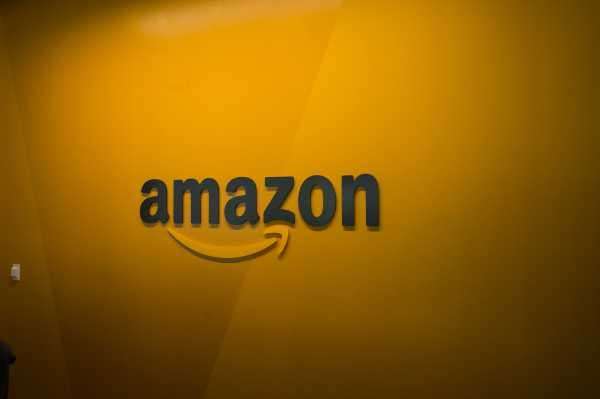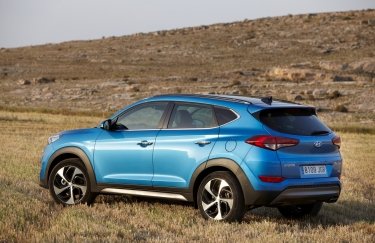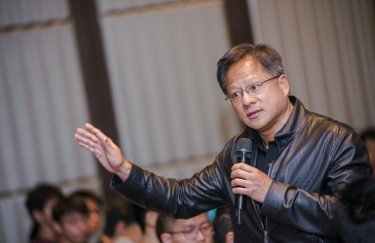

Vox’s home for compelling, provocative narrative essays.
The year of speculation around Amazon’s HQ2 landing pad felt like nothing so much as a prolonged anxiety attack. Attracting corporations has generally been viewed as economic development, but Amazon, now valued at $1 trillion, feels bigger than Bell Labs, Under Armour, Twitter, or any given sports stadium.
As of last week, Amazon has picked two new homes, each of which offered incentives and subsidies. Northern Virginia and New York City offered workforce cash grants of $22,000 per job and $48,000 per new job, respectively. New York is kicking in nearly three times what Virginia offered. Both probably overpaid, given that they are already rich in the “access to tech talent” that Amazon stressed as paramount for its next location. And the loosely connected environs of Crystal City, Pentagon City, and Potomac Yards have been renamed, per northern Virginia’s response to Amazon’s request for proposals, as the agglomerated “National Landing.”
Amazon is bigger, both as balance sheets go and in how it feels. The fracas around the HQ2 search has been a concentrated version of what sociologist Harvey Molotch, in 1976, termed the “growth machine”: the willingness of cities to prioritize economic development and corporate attraction. The underlying logic, which is not necessarily flawed, is that in order to provide public services, there must be a base to be taxed. And economic development is, fundamentally, better than decline, which results in a scarcity of resources most likely to hurt vulnerable and underresourced people.
Ergo, a city needs people who make lots of money to live in it, so that they can, ideally, kick in to the public infrastructure. But there’s always been tension between what Molotch describes as “politically mobilized local elites” — elected officials, private sector higher-ups, chambers of commerce — and the proletariat; the former is likely to handily benefit from growth, whatever it may be, while the latter often feels that its well-being and way of life is perhaps expendable.
I live in DC, right next door to Crystal City. I also work for an advocacy organization, the Coalition for Smarter Growth, that fights for a more affordable and accessible region, primarily through urban policy and planning. Our ideological paradigm favors affordable development in places that are accessible by transit. We work specifically to prevent suburban sprawl, which is an environmental, inequality-exacerbating disaster. Amazon, unsurprisingly, has been at the forefront of many of minds in our universe since the HQ2 search was announced.
The DC area has an incredible regional transit system in Metrorail and Metrobus, and a growing mode share of people who walk and bike to work, but that isn’t enough to squelch the sentiment that the region is expensive and hard to get around. People who live here are right to be nervous about the Amazon effect, though Amazon is merely exposing what’s been true for decades: that accessible, affordable housing; frequent, reliable transit; well-protected jobs that pay living wages; and land use laws that support environmentally sustainable growth are talking points, but not necessarily priorities for elected officials.
Our region needed these fundamentals long before HQ2 was a twinkle in anyone’s eye, and would need them whether or not Amazon existed. It’s humbling to admit that for many people, we’ve failed to meaningfully provide.
Here are three big takeaways to consider for DC residents who want to think about what this means for the region — and the country more broadly as we watch the new HQ2 cities develop.
Amazon choosing a second-tier city could have been more destructive
Amazon coming to Crystal City validates much of what smart-growth advocates have known for decades: Walkable, well-connected places are economic engines. Another northern Virginia site, further afield in Loudoun County, was also under consideration. But the metro-accessible, downtown-DC-proximate, and relatively dense Crystal City won out.
There are also practical merits to Crystal City. It lost 17,000 jobs over five years as a result of the military’s base realignment and closure initiative, and so has been readying itself for a large influx of workers anyway. And developer JBG Smith pulled most of its leasable space off the market on the same timeline as Amazon’s HQ2 search.
Nonetheless, corporations go where their CEOs want them to be, and Jeff Bezos has shown an obvious personal preference for the DC area, which is also home to a large, existing pool of skilled white-collar workers—many of whom have clustered in this region because it’s one that epitomizes smart growth.
Contrary to what some analysts have said, this is, I think, a good thing. The bandied-about idea that Amazon should go to a place where it’s “needed,” likely some ailing Rust Belt town, is perverse, as is the idea that private corporations can be counted on to benevolently redistribute wealth. Cities like Cleveland, Ohio, where I lived for several years before moving back to DC, are replete with weak political and social institutions. Amazon, for its part, is not, should not be, and was never going to be the fix for cities like it, which have so much more to lose. Just look at Wisconsin’s Foxconn boondoggle.
Amazon plans to gradually hire 25,000 workers in northern Virginia. This is not substantially greater than the number of workers the DC region adds yearly. Nonetheless, Amazon feels like a blow because it’s a single thing onto which we can graft any frustrations — traffic, expensive housing, irritating tech bros — about where we live. Adding workers to a region over time, even if it exacerbates income inequality just as much, has never come off as cataclysmic. But HQ2 does.
We’ll perceive Amazon as increasing income inequality — but that was likely to happen regardless
Living in America has never been easy or affordable for many people, and is increasingly difficult and expensive for even more. In the 40 years since Molotch named the growth machine, wages have stagnated, personal debt has exploded, and the sense that our redistributive policies are largely unfair has crept into our discourse. Amazon’s arrival might once have been heralded as an unalloyed good. But in our current cultural context, the prospect of HQ2 felt, to any given person on the street, like a mixed bag at best and a looming disaster at worst.
The “HQ2 spectacle” was a race to the bottom. But mayors and their backers didn’t have to participate. They did because not doing so is at odds with how American cities are currently run. There was no reasonable expectation that any place’s chamber of commerce class would pass on the opportunity to offer high-dollar tax breaks to attract an employer, even if that employer doesn’t need them to make their math work.
There is no doubt that inequality, already raw, will intensify post-Amazon: People who have however minor a foothold will likely see their property values increase, while others, especially renters, will struggle to pay ever-higher housing costs. We should be skeptical, though, of how much of that can be attributed to Amazon, which should not be treated as exceptional in its capacity to transform places for good or ill. After all, we are hurtling toward a future in which something even greater than any corporation — the shifts in the climate in which we live — will profoundly and painfully alter our lives at a rate at which we have chosen not to comprehend.
Any positive city developments that come from Amazon’s presence should have been prioritized by the public sector regardless
In Crystal City, perhaps the specific planning projects that my colleagues and I have pushed, like bus rapid transit, a second entrance to the Potomac Yard Metro station, and the conversion of Route 1 into a boulevard, are more likely to occur now that Amazon is coming. Or not. That’s the thing: Amazon may be big, but its expansion, functionally, is business as usual. There are promises for critical transportation improvements, and Amazon’s presence offers an opportunity to push for more affordable housing. But there are no promises yet on how any of it will be implemented. We’ll be advocating just as much for our foundational priorities as we always have.
If you want the DC area, or Long Island City, to retain any semblance of a cost of living that’s not a gross financial strain, and to be places where commutes aren’t nightmarish, you must support more housing, more funding for affordable housing, strong protections and resources for existing tenants, living wages and unionization efforts, and the conversion of space for cars into space for buses and trains. And no matter how unpopular such priorities are to some constituents, they must be carried out region-wide. Maybe Amazon can “inspire action.” But ultimately, the decisions to do these things are signed, sealed, and delivered by elected officials and administrators — the public sector. And they needed to happen decades ago.
The investments that cities, and this country, should have made by prioritizing frequent, reliable public transportation; affordable, fair housing; and the compact, accessible, and environmentally sustainable land use patterns that support the former should not be made for Amazon. They should be made for our own good, and to correct a nationwide pattern of environmental design that is not sustainable, resilient, or healthy.
Over our 20-year history, Coalition for Smarter Growth has celebrated numerous smart-growth victories in Crystal City and northern Virginia. Arlington’s Rosslyn-Ballston corridor, planned in the 1960s, is a national model for building abundant housing near transit. We know what we need to do, and in several cases, we’ve done it well.
But it is also reasonable to say that despite its best efforts on particular projects, our region has not meaningfully prioritized a shift to an ideology that puts affordability and access first. That’s why the Amazon anxiety is palpable. The inherent value of more six-figure jobs coming to the DC region, and the attendant industries that will support them, should not be overlooked. But many people feel as if they won’t be touched by those jobs, and that Amazon’s presence will lock them out of a place that they have increasingly tenuously been able to call home.
Growth does not solely look like the wholesale accommodation of a particular corporation’s headquarters; Crystal City is likely to accommodate Amazon, the workplace, just fine. But people don’t just work in cities; they live in them. That’s why cities are as volatile and in flux and as mobile as we deserve to be.
The best of that energy and interconnectedness is championed as the great promise of cities by the likes of booster economist Ed Glaeser. But that can only be realized through investments in ourselves.
Alex Baca is the engagement director of the Coalition for Smarter Growth, and was previously the general manager of Cuyahoga County’s bike-share system. She has worked in journalism, bike advocacy, architecture, construction, and transportation in DC, San Francisco, and Cleveland, and has written about all of the above for CityLab, Slate, Washington City Paper, and other publications.
First Person is Vox’s home for compelling, provocative narrative essays. Do you have a story to share? Read our submission guidelines, and pitch us at [email protected].
Sourse: vox.com






